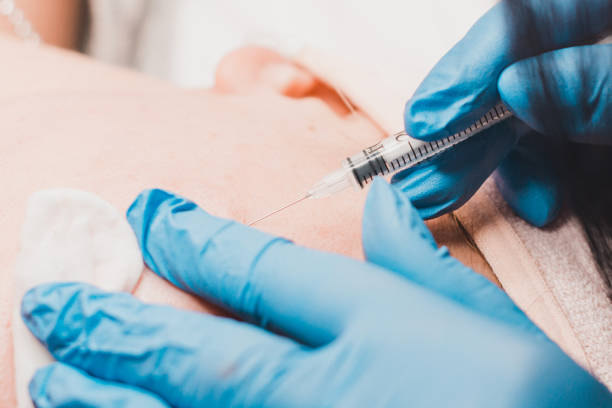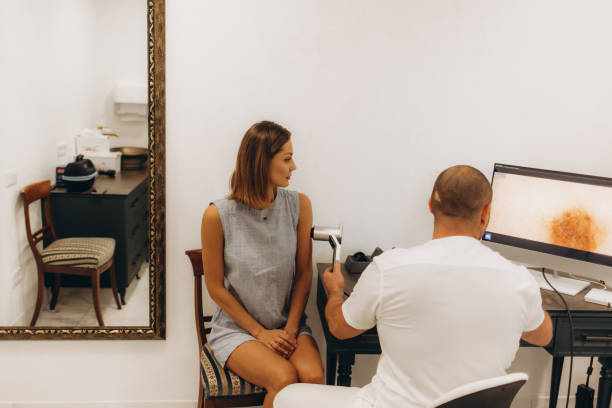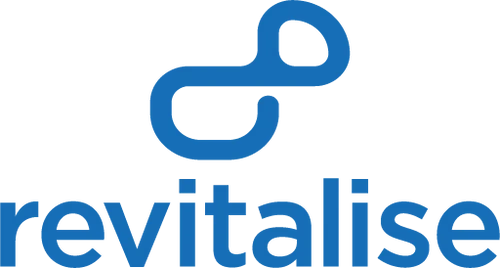
While most cysts are not dangerous, they can be annoying or physically unappealing, leading many to consider dermatological cyst removal for cosmetic or comfort reasons. Cysts occur because of blocked sebaceous glands, Disease, or other causes; they may be small or large and in different places, determining how they are removed.
Dermatological and Treatments cyst removal are the two methods used to remove cysts. The advantages and disadvantages are equal, so patients should choose according to their needs and the characteristics of the cyst.
This article will highlight the two popular removal techniques, the different types of treatments available, their effectiveness, recovery time, and the costs associated with them. We will also examine why dermatological cyst removal at Revitalise London could suit individuals looking for safe, effective, and minimally invasive solutions.
Knowing which treatment is the best for your cyst will enable you to choose the best care. We can discuss the types of cysts and the factors that dictate the best removal option.
Understanding Cysts: Types and Causes
Fluid-filled sacs called cysts can develop in any body tissue, including skin, organs, and bones. Although most cysts are harmless, they can hurt or cause self-consciousness. Cysts can be of several common types with their characteristics and possible causes.
1. The most common type of skin cyst is a Sebaceous cyst. Sebaceous glands produce oil to lubricate the skin, and blockage of these glands causes them. Sebaceous cysts are usually painless and slow-growing but may become inflamed or contaminated and need removal.
2. Sebaceous Cyst: Sebaceous cysts may be mistaken for epidermoid cysts, but they are caused by the accumulation of keratin beneath the skin. They are usually round, firm cysts on the face, neck, or torso.
3. Hair follicle pilar cysts are usually on the scalp and arise around hair follicles. Pilar cysts are prevalent and typically benign but can grow large over time.
4. Ganglion Cysts: Ganglion cysts are common on the wrists and hands and are derived from the synovial fluid of joints and tendons. They are usually not cancerous but can be bothersome or even impossible to move.
Causes and Risk Factors
Reasons for cysts to form include:
- Many cysts are formed due to blocked oil or sweat glands.
- Some Diseases can lead to the formation of cysts.
- Family history: Pilar cysts may be pass down from family to family.
- Skin conditions: Acne or dermatitis can make it more likely that cysts will develop.
When a Cyst Requires Removal
Many cysts are harmless and don’t need to be removed, but they should be seen if:
- They become large or painful.
- They have redness, swelling, or discharge that shows they are contaminated.
- They are bothering you in some way.
Deciding when to remove a cyst is essential because some cysts are more suitable for dermatological treatment, while others can only be treated Treatmentsly.
What Is Dermatological Cyst Removal?
Dermatological cyst removal is a term for nonTreatments treatments for cysts provided by dermatologists. These minimally invasive methods are ideal for patients who wish to have a faster recovery and fewer scars. Usually, dermatologists use several techniques to remove or reduce cysts without the necessity of traditional Procedure.

Common Dermatological Cyst Removal Methods:
1. Laser Therapy: In this therapy, focused light breaks down the cyst contents that can be absorbed or expelled from the body. This is effective for superficial cysts, especially small superficial cysts.
2. Dermatologists may inject a corticosteroid directly into the cyst for some cysts. It reduces inflammation, and over time, the cyst shrinks. Sebaceous cysts are most often treated with it.
3. Dermatologists can drain the cyst’s contents in painful or swollen cysts with a sterile needle. This relieves the pain and shrinks the cyst, but if the sac is not entirely removed, the cyst may return.
4. Cyst removal: A small incision may be made to remove the cyst. This method is used when the cyst is easily accessible and small. Local anaesthesia allows for a minor excision without requiring complete Treatments removal.
Pros and Cons of Dermatological Cyst Removal
Pros:
- Minimally invasive, with no need for general anaesthesia.
- Little or no recovery time compared to Treatments methods.
- Fewer risks of Disease.
- Often suitable for more minor or superficial cysts.
Cons:
- Not consistently effective for larger or deeper cysts.
- If not, recurrence may occur.
- Not suitable for cysts in certain areas.
Small, uncomplicated cysts and those that want a quick recovery with minimal downtime can be removed dermatologically. Of course, the size and position of the cyst must be considered to determine whether this treatment is suitable.
What Is Treatments Cyst Removal?
Treatments cyst removal is more invasive than dermatological treatments and is usually done if other methods are ineffective or inappropriate. This type of treatment is ideal for larger, deeper, or more complex cysts that need to be excised entirely. Depending on the cyst’s size and position, a specialist such as a dermatologist or Doctor usually removes the cyst Treatmentsly, using local or general anaesthetic.
Common Treatments Cyst Removal Methods:
1. Complete Excision: The most common method of Treatments removal involves removing the cyst and its sac to decrease the likelihood of recurrence. The area is anaesthetised locally, and a small incision removes the cyst and its contents. It’s then stitched up, and the stitches are removed within one to two weeks.
2. Larger or more painful cysts may require incision and drainage to drain the cyst’s contents. This method will relieve symptoms immediately but won’t treat the cyst wall so the cyst can return. The cyst is usually inflamed or contaminated, which is a faster way to relieve symptoms.
3. If the cyst is contaminated, an extensive Treatments excision will be required. If the cyst is removed, the procedure should be done after the Disease is treated, and it will require a more extended recovery period because it will include the use of antibiotics and care.
Pros and Cons of Treatments Cyst Removal
Pros:
- Remove the cyst and its sac completely to reduce recurrence.
- Ideal for larger or more complex cysts.
- It can be done under local or general anaesthesia.
Cons:
- Requires a longer recovery time.
- Complications, scarring and Disease.
- Typically more expensive than Non-Invasive treatments.
More significantly, problematic cysts or other failed methods should be addressed Treatmentsly by removing the cyst. It is more thorough but also longer and riskier regarding scarring or complications.
Dermatological Cyst Removal vs Treatments
The decision between dermatological and Treatments removal of cysts has many factors one should consider, such as effectiveness, recovery time, possibility of scarring and cost. Both methods have unique advantages and are appropriate for certain kinds of cysts. A comparison of the two is as follows:
Effectiveness and Recurrence Rates
NonTreatments treatments like laser therapy or corticosteroid injections can help remove smaller cysts and those in the superficial layer of the skin. But these treatments don’t necessarily remove the cyst’s sac, leaving the cyst at a higher risk of recurrence. Dermatological methods may have to be used again if cysts are prone to recurrence.
Complete excision is very effective in preventing cyst recurrence, and Treatments procedures are highly effective. This method removes both the cyst and its sac and removes it for good. Although there is always a slight chance of recurrence, Procedure usually provides a permanent solution.
Dermatological Cyst Removal Recovery Time & Scarring
Dermatological Cyst Removal: In fact, recovery times for dermatological treatments are far shorter. Usually, patients with minor pain can return to their everyday activities the day after or within a few days. The methods are low-risk as they are noninvasive. This, however, depends on the treatment and might leave minor redness or swelling for a short while.
Treatments Cyst Removal usually requires a more extended recovery period. Depending on the complexity of the procedure, it may take several days to a week to recover. The incisions made during the process also carry a higher risk of scarring. The scar’s size depends on the cyst’s location and the Doctor’s skill.
Dermatological Cyst Removal Cost Comparison
Cyst Removal through Dermatology: This nonTreatments treatment is generally less expensive, particularly for smaller, less complex cysts. Treatment costs may vary by the type of treatment and the clinic’s location, but it is more affordable than Procedure.
However, Treatments Cyst Removal may be more permanent and less expensive in the long run. It is more costly because it is a complicated procedure requiring anaesthetics, the services of a qualified Doctor, and so on. Additional costs may include follow-up appointments and complications that can occur as you recover.
Best Choice Based on Cyst Type and Patient Preference
Dermatological Cyst Removal: This is a suitable method for curing smaller, superficial cysts that are not uncomfortable and do not pose much of a risk for Disease. Dermatological options may also be better for those who wish to recover more quickly with less invasive treatment.
More significant, deeper, recurrent, or contaminated cysts are often best treated Treatmentsly. This procedure removes all the cysts and offers a long-lasting solution with a longer recovery.
Ultimately, it depends on the cyst’s size, location, and severity and the patient’s preference for recovery time, cost, and possible recurrence.
What is the Cost of Cyst Removal?
The cyst removal cost is usually determined by the method used, the clinic’s location, and the complexity of the Procedure. Understanding these factors can help you understand the factors that will determine your cyst removal costs.

Dermatological Cyst Removal Costs
Dermatological cyst removal methods such as laser therapy or corticosteroid injection are usually less expensive than Treatments procedures. Although the price can vary from £150 to £500, it depends on the size, location and number of treatments needed.
Sometimes, the cyst recurs, and additional Costs may be needed for a follow-up session. NonTreatments treatments are usually effective, but multiple treatments can increase the cost.
Treatments Cyst Removal Costs
Complexity of Procedure: Treatments cyst removal is generally more expensive as the procedure is more complex. It typically costs between £500 and £2,000 or more, depending on whether local anaesthetic or sedation is needed and the type of Procedure required. This price range may incorporate pre-Procedure consultations, Procedure itself, and post-Procedure care.
Cost Factors: Besides location, Treatments cyst removal may depend on the clinic’s location, the Doctor’s experience, and whether the procedure is performed in a private or public healthcare facility. Follow-up visits will also incur additional costs to monitor the healing process and treat complications.
Does Cyst Removal come under Insurance?
If the cyst is causing the person significant health issues or pain, then the cyst removal may be covered by insurance. However, the removal of cosmetic cysts is less likely to be covered. Checking with your insurance provider will help you determine if your policy covers it.
Cyst removal costs can vary widely depending on the type of procedure and treatment plan you receive. If you are unsure of what you can get for what price, consult a clinic like Revitalise London to help you explore affordable options that fit your budget.
Why Choose Revitalise London for Dermatological Cyst Removal?
When it comes to dermatological cyst removal, it is essential to choose the right clinic, as this will bring you the best results. Revitalise London provides advanced, Non-Invasive, minimally invasive treatments for cyst removal with the highest degree of expertise and precision.
Expertise in Non-Invasive and Minimally Invasive Treatments
Non-Invasive cyst removal is what our experienced dermatologists are highly skilled in Non-Invasive cyst removal. Whether your cyst is small and can be creamed off or large and requires drainage, excision, or Procedure with the laser, we use the latest, most comfortable and effective procedures to ease your discomfort and to remove your cyst safely and effectively. When you choose Revitalise London, you select a clinic with vast experience in treating all types of cysts they can without invasive Procedure.
Affordable and Customised Treatment Plans
At Revitalise London, we know that each patient has different needs. For this reason, we have packages tailored to your situation and budget. At Revitalise London, we partner to understand our patients’ needs and concerns and select the proper method of removing cysts for the best outcomes.
In addition, we offer competitive pricing and clear costs so that you know what you are getting into before treatment. The goal is to make cyst removal affordable so everyone who needs the care can get it.
Client Testimonials and Successful Case Studies
Revitalise London does what its name suggests, and thanks to our patients, they rave about their positive experiences with us. We have a proven track record of removing cysts; many of these people have regained their confidence and quality of life. We have many testimonials from our clients, and they all say we have been committed to providing the best care, compassionately and professionally.
Choosing to undergo dermatological cyst removal in Revitalise London means selecting an affordable, patient-centred, and expert clinic.
Aftercare and Recovery Tips
After your dermatological cyst removal treatment at Revitalise London, proper aftercare is needed to help achieve the best outcome and avoid any risks. Your recovery process and how to care for your skin will be like this.
Post-Treatment Care Instructions
The type of cyst and treatment will determine your dermatologist’s aftercare instructions. Such instructions may involve maintaining a clean and dry treated area, applying topical ointments or creams to decrease inflammation, and taking prescribed medications to alleviate pain or prevent Disease.
Dermatological cyst removal is usually minimal, so recovery time is relatively short. Side effects such as mild redness or swelling may happen, but these will disappear within a few days. It is essential to follow all recommended post-treatments to minimise healing difficulties and avoid complications.
Preventing Diseases and Scarring
Touching the treated area with dirty hands, scratching, or picking at the site will prevent Diseases. Consult your healthcare provider immediately if you see unusual signs like raised redness, pus, or tenderness.
Any prescribed ointments or moisturisers should be applied as directed to minimise scarring. The treated area should be kept from the sun, as direct contact with UV rays may darken scars and prolong healing. The skin should be protected during recovery by wearing sunscreen with a high SPF.
When to Seek Follow-Up Care
Most patients will do well after dermatological cyst removal, but it is advised to return for a follow-up appointment if your dermatologist recommends. Follow-up visits are done to ensure that the cyst is entirely gone and no complications develop. If your severe symptoms include excruciating periods, heavy periods or symptoms of Disease, see your doctor straight away.
These aftercare and recovery tips will help you know how to guarantee smooth healing and better results from your cyst removal treatment.
